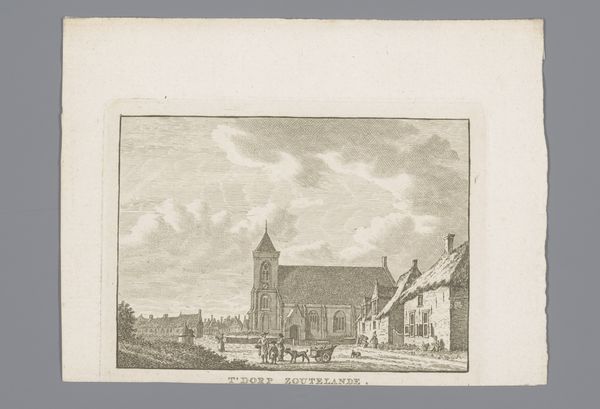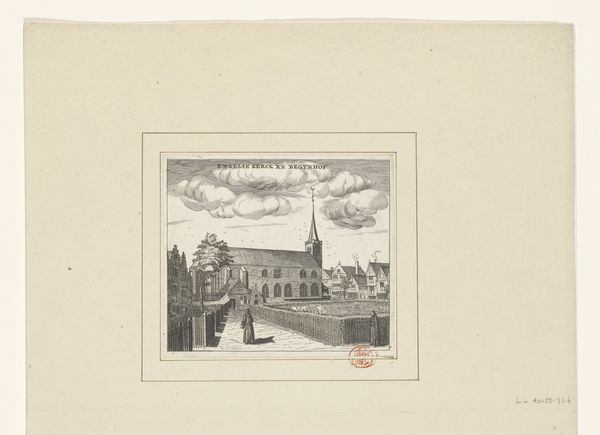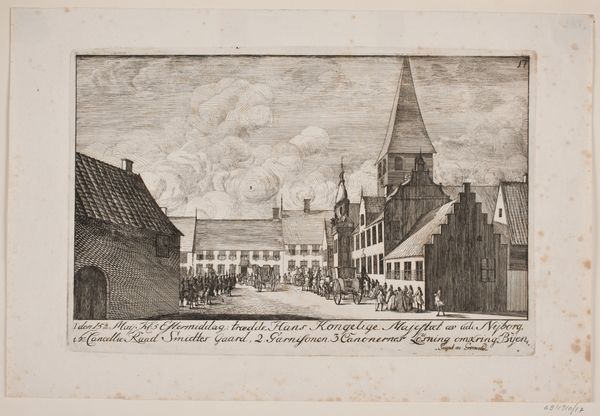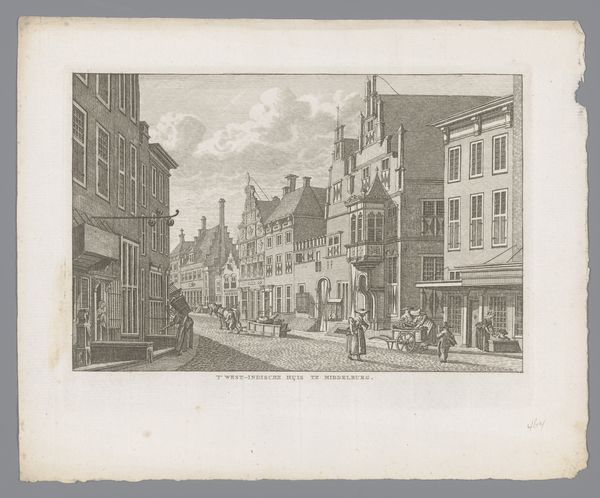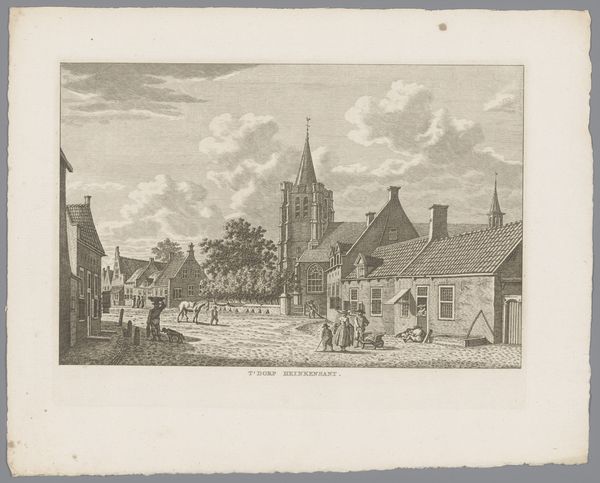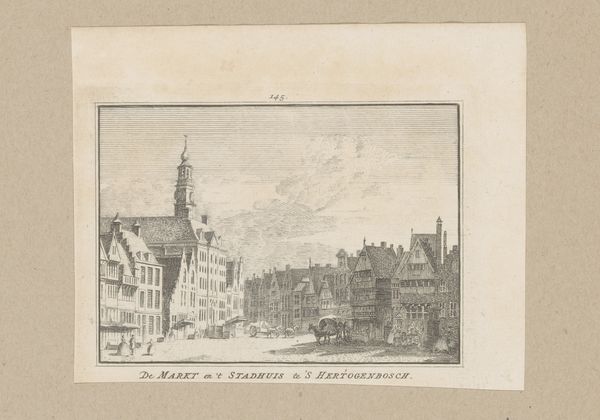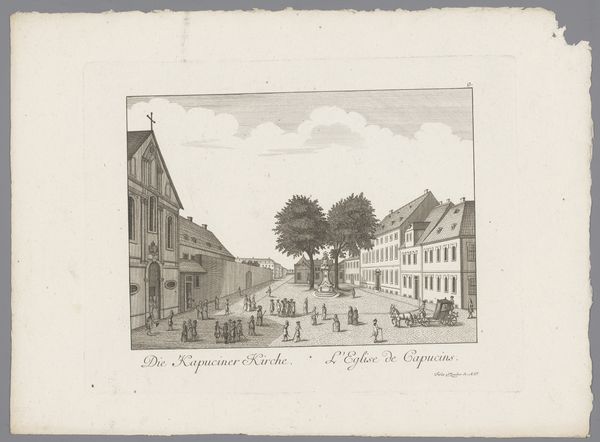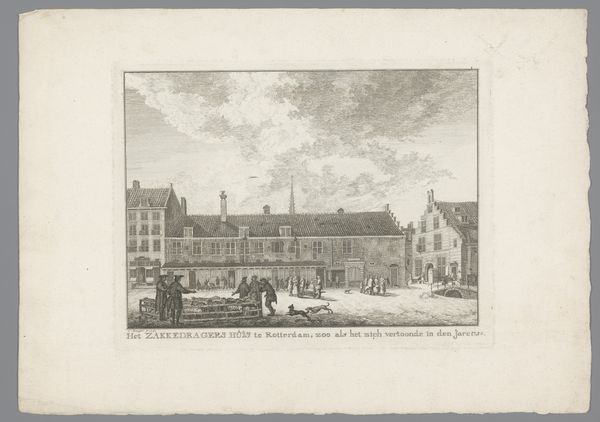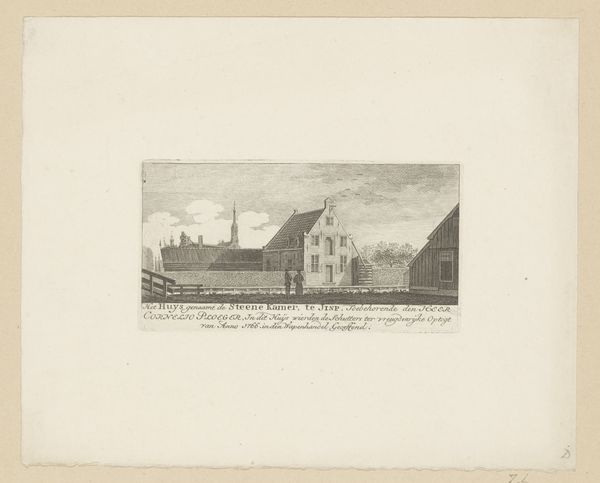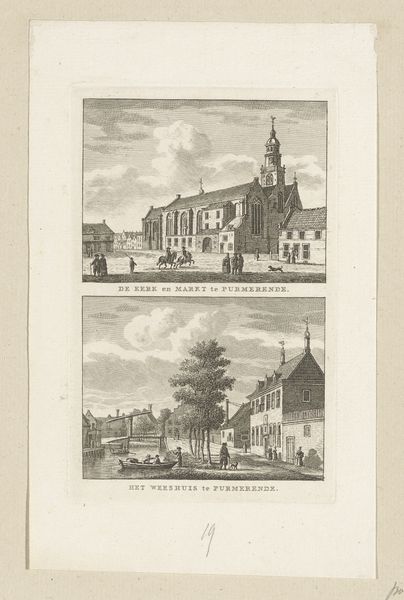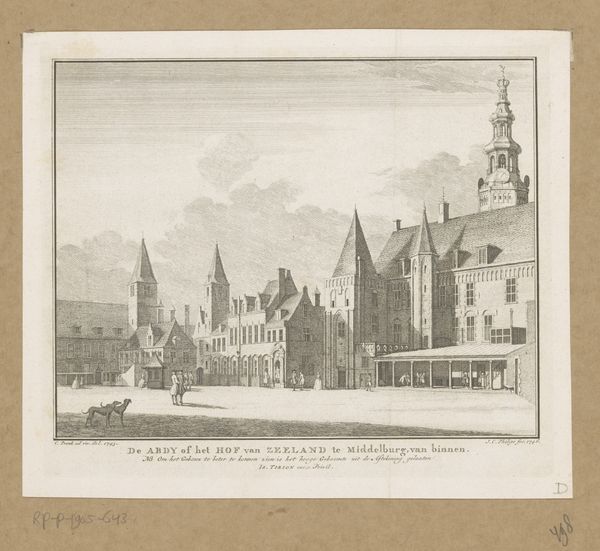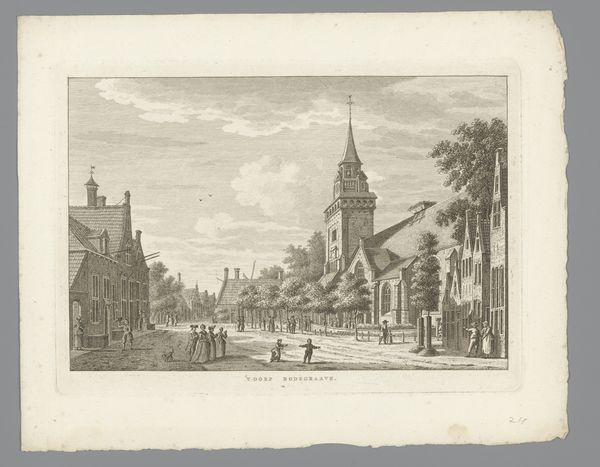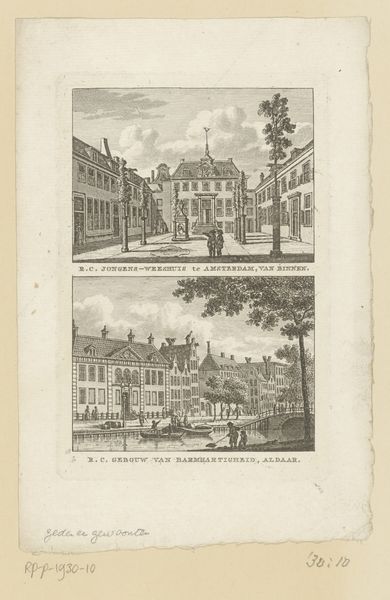
print, engraving
#
neoclacissism
# print
#
landscape
#
cityscape
#
engraving
Dimensions: height 121 mm, width 140 mm
Copyright: Rijks Museum: Open Domain
Curator: Immediately, I notice the precision of the lines. There’s a stillness, almost a reverence, conveyed in this detailed cityscape. Editor: Yes, it has an austere beauty. But the labor intensiveness to produce all those precisely placed, almost uncountable lines... What was the point, exactly? Curator: We’re looking at "View of the Sint-Janskerk in Gouda," a print by Carel Frederik (I) Bendorp, likely created between 1786 and 1792. It's an engraving that captures the church in exquisite detail. Notice how the artist uses hatching and cross-hatching to define form and texture, creating a convincing sense of depth. This aligns with the Neoclassical movement, favoring order, clarity, and rationality. Editor: I see all those qualities that are aligned with neoclassicism. But I still get stuck on the sheer hours of concentrated manual labor invested in carving that plate. All of the material and effort of it... was this a singular pursuit for aesthetic reward, or some form of commission that drove production? Curator: Precisely! And observe the church’s towering spire and the surrounding buildings: The composition leads the eye upward, emphasizing the church’s imposing presence within the cityscape. Consider how the artist positions the figures in the foreground—their placement provides scale while inviting us to consider civic and religious life in Gouda during this era. Editor: It definitely makes you think about it. And considering this had to have been commissioned by a wealthy patron, it puts into perspective both the availability of labor and capital that existed during this time in history. Engraving was no doubt seen as something of extreme skill back then but, still... Curator: In Bendorp's piece, we witness an interplay between architectural grandeur, calculated composition, and refined detail, reflecting the core values of Neoclassicism. Editor: True enough. What began for me as curiosity surrounding artistic and economic drivers opens into an appreciation of the final visual product here, offering valuable insights into both artistic and historical contexts.
Comments
No comments
Be the first to comment and join the conversation on the ultimate creative platform.
